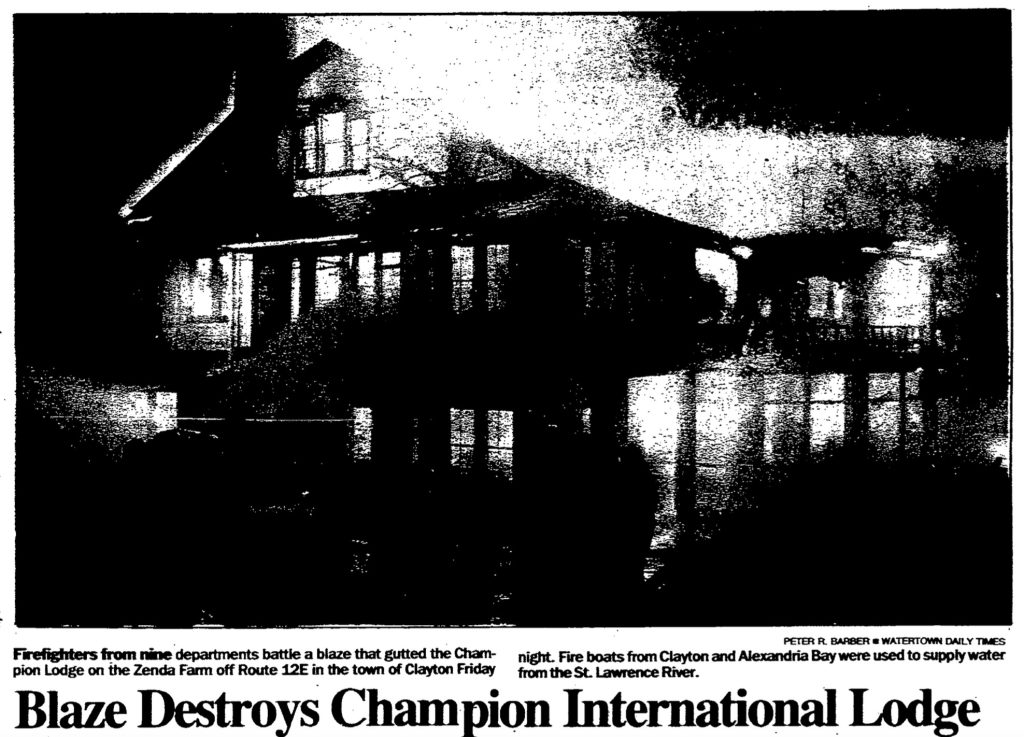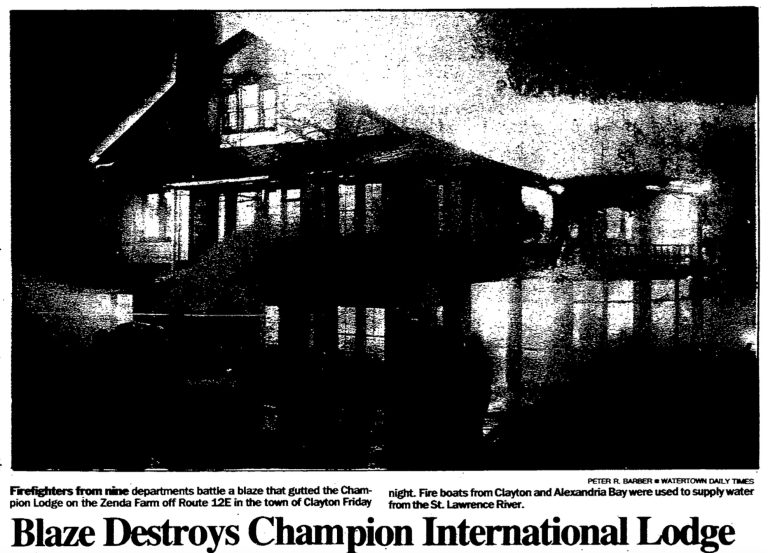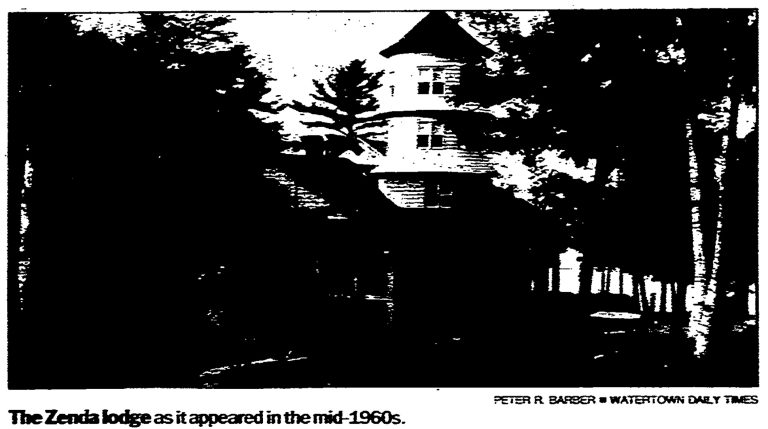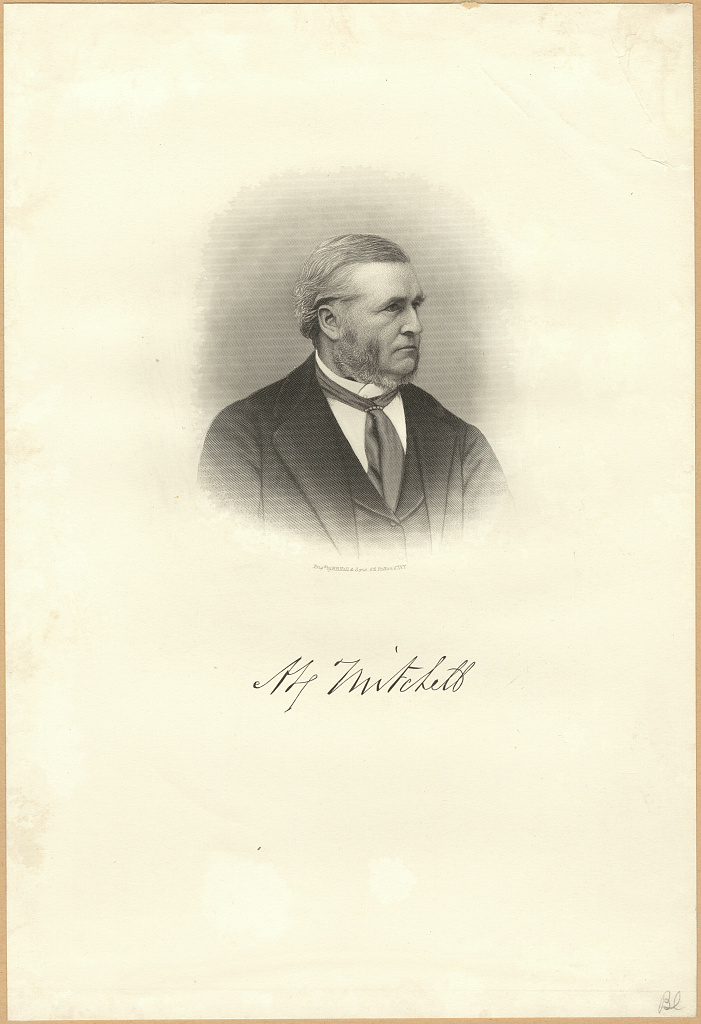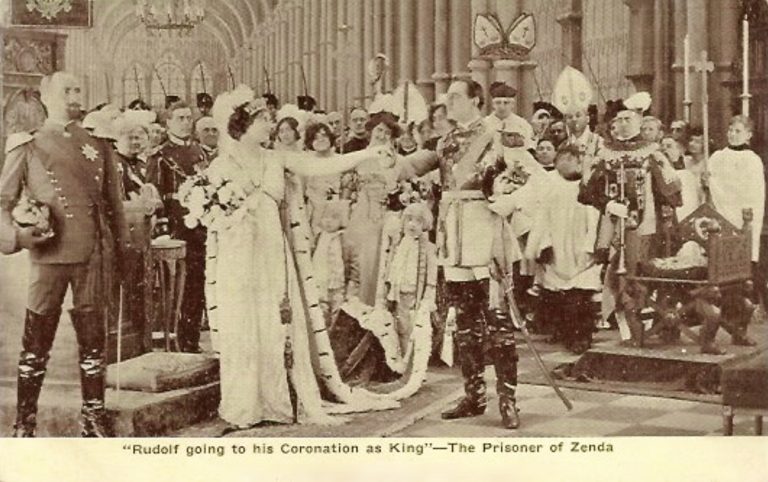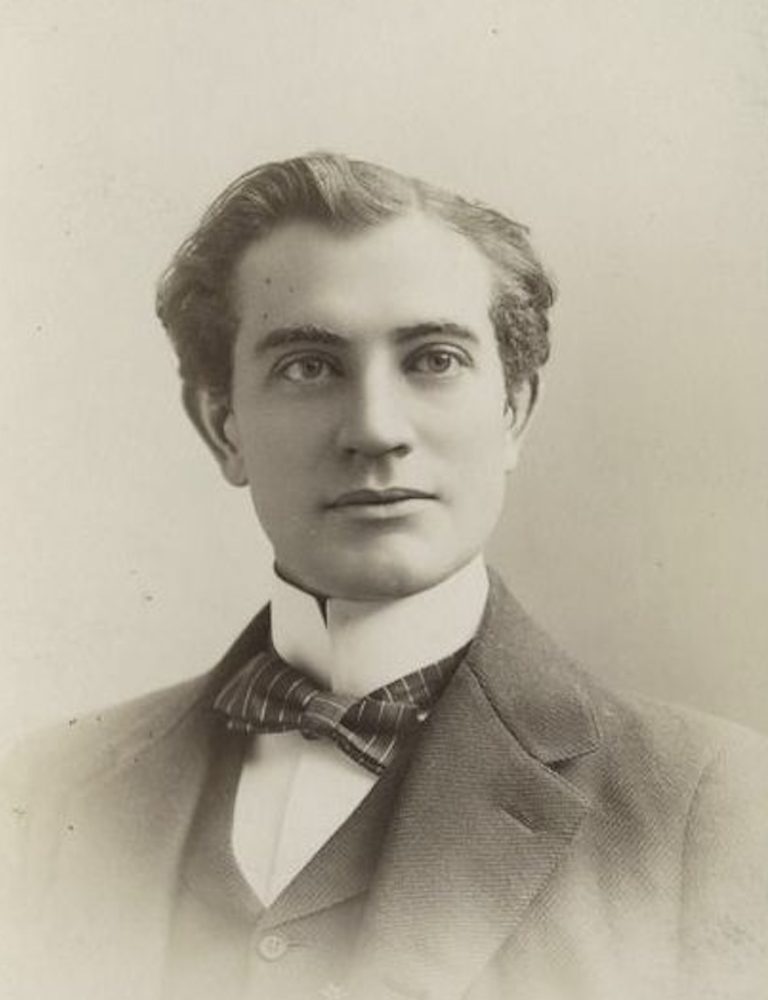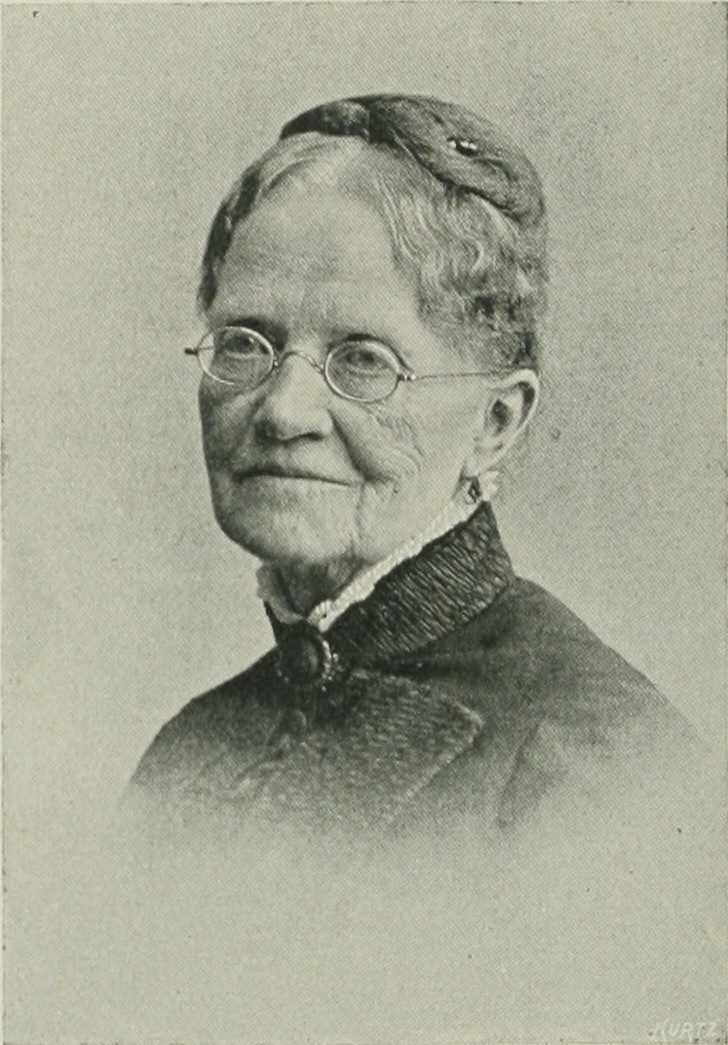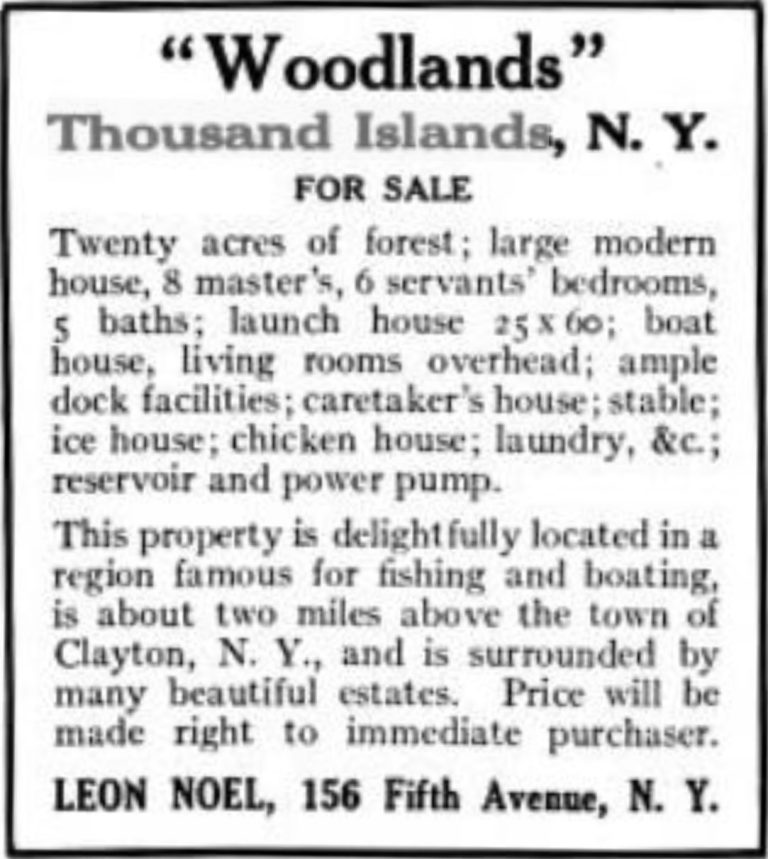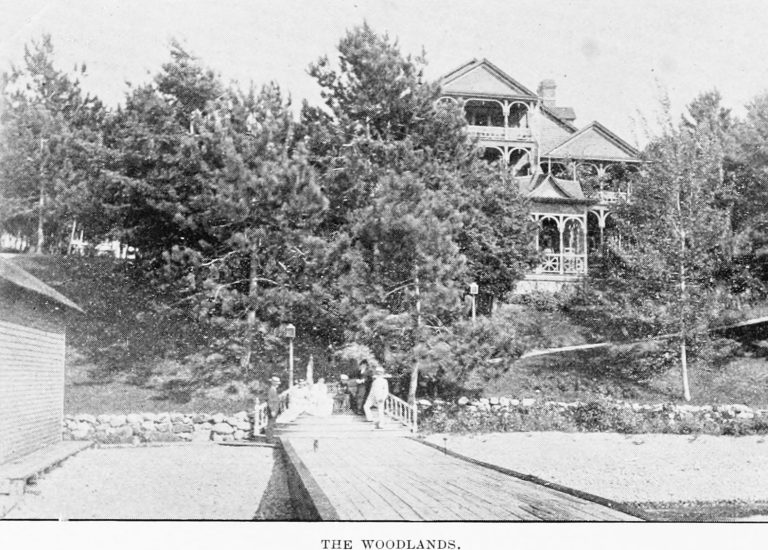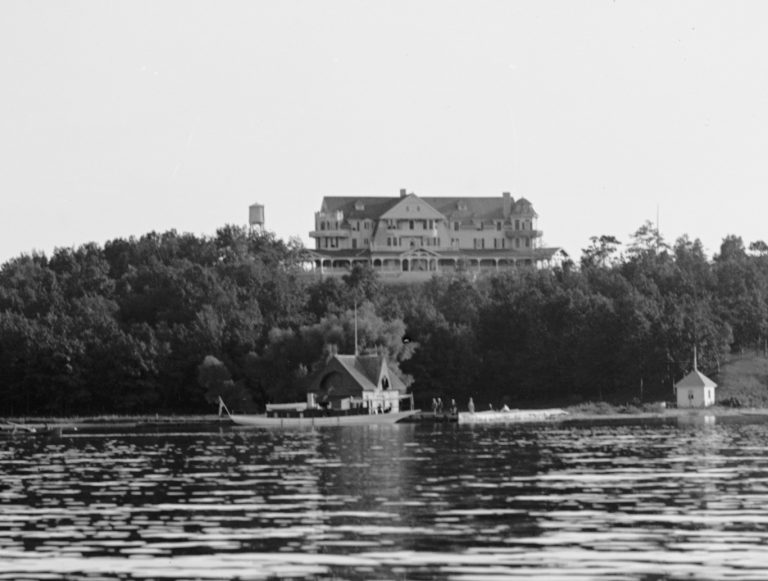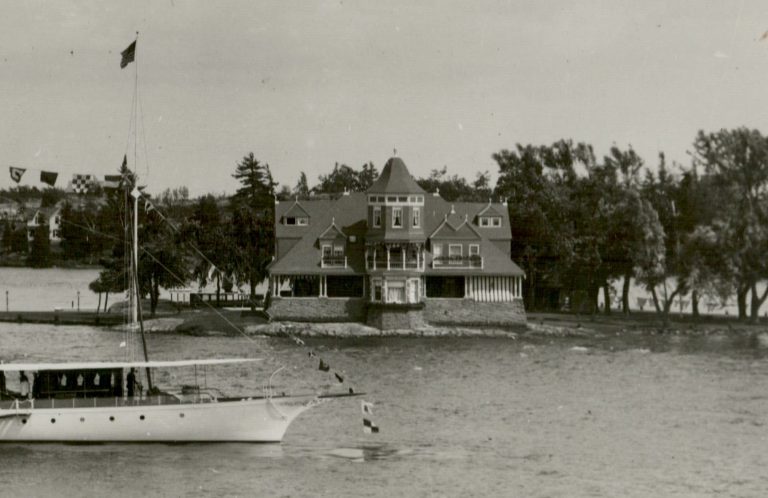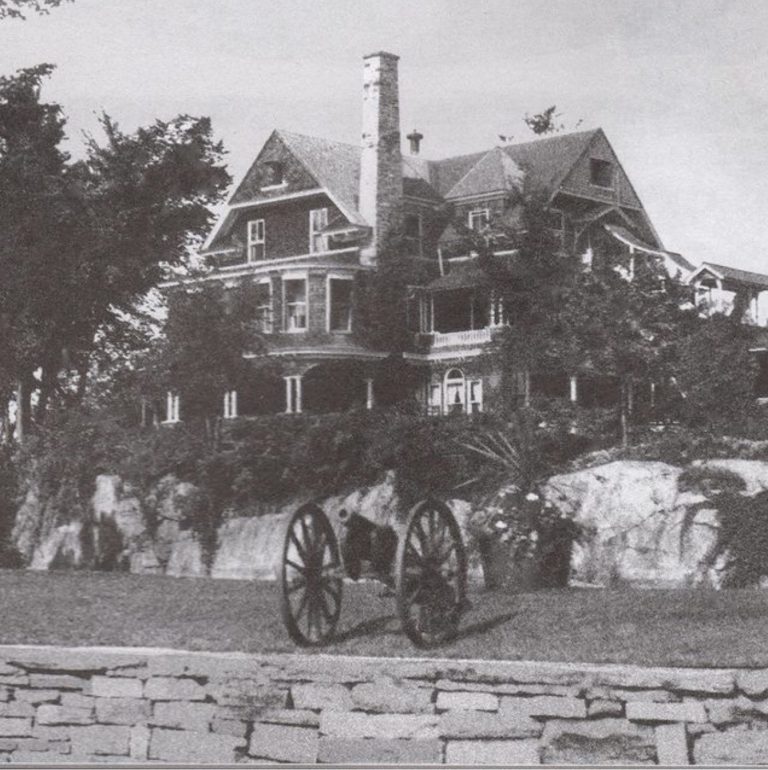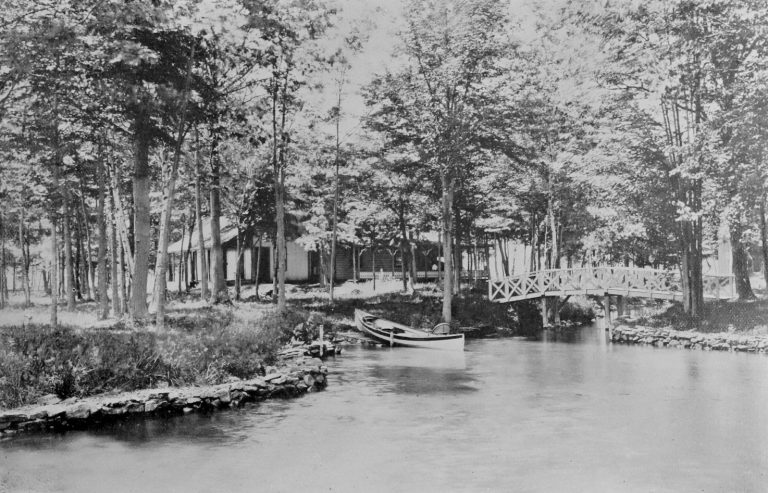Widow of Chicago, Milwaukee & St. Paul Rail Road Buys Woodlands, Later Summer Home “Zenda” of World Renowned Actor James K. Hackett
Woodlands, once located upriver of Clayton between where the Manatauk Hotel was situated at Bartlett Point and Merry Knoll Campground, may not be as well known compared to other Thousand Island homes. Still, its history of owners included the widow of a railroad tycoon and a famous actor. As is the case with many places, information and photos are pretty hard to come by—at least initially, until the history of ownership comes together, revealing the change in names to “Zenda” in 1915.
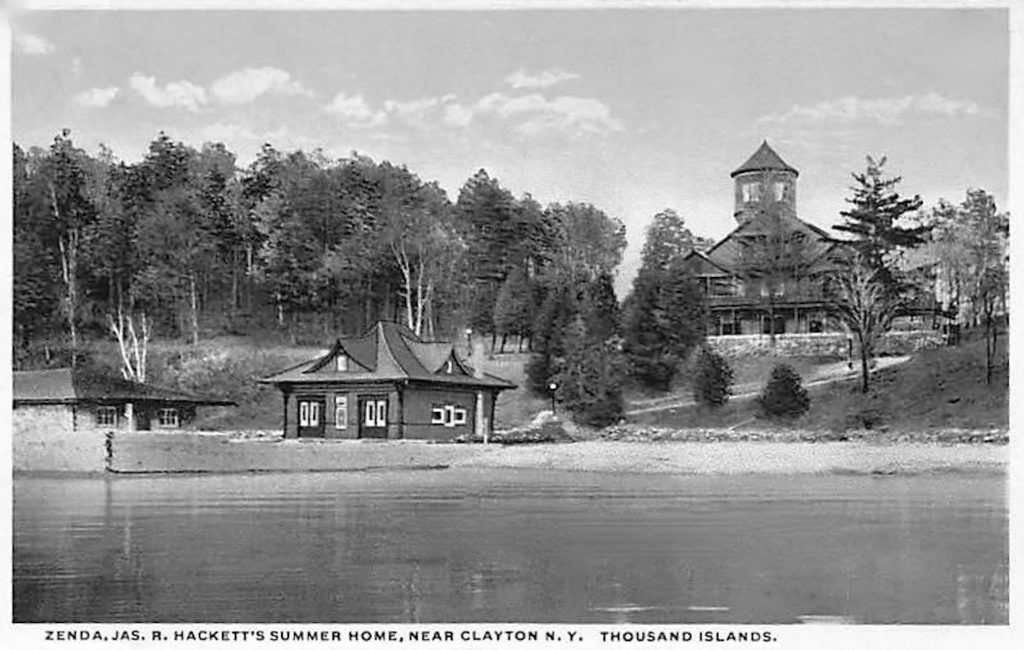
In 1889, two years after the death of her husband, Alexander Mitchell, Mrs. Martha Reed Mitchell purchased Woodlands, a 10-acre estate thought to have been built several years prior, for $12,000. The previous owner appears to have been Mrs. T. N. Howard, owner of “Woodlawn,” which it was also sometimes referred to, who occupied it from at least the time of her engagement to Mr. Reed of Bates, Reed & Cooley, New York City, in March of 1885. Described as a “Very fine cottage,” it was built in 1883 and designed by Lamb & Rich of New York City, resembling Dr. Holland’s “Bonniecastle” in style.
Also described as nearly square, the house had four fireplaces on each floor and was two stories high, with verandas eight feet wide on each floor. It is unknown if Mrs. Mitchell purchased directly from her or not, but according to the information further below, she greatly expanded on the original building. Money was of no concern for her as Mr. Mitchell had been deemed “The richest man in the midwest,” who owned a home in Milwaukee at the time of his death which cost $1,500,000 to build.
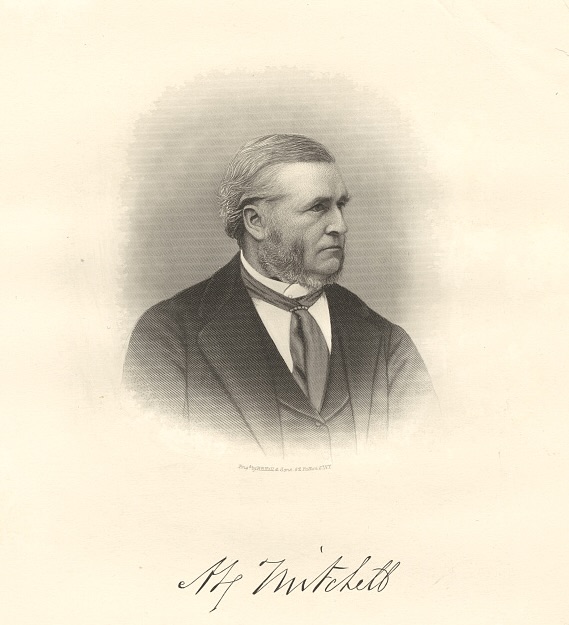
It was only several years before, in 1880, that Mr. Mitchell was elected president of the Chicago, Milwaukee, and St. Paul railways. His obituary in the April 20, 1887, Watertown Daily Times noted–
Mr. Mitchell was born near Aberdeen, Scotland, in 1818. Since 1874 he has been president of the Chicago, Milwaukee & St. Paul railroad. In politics, Mr. Mitchell was a whig before the formation of the republican party, and was afterwards a republican.
He became in 1866 a supporter of the administration of Andrew Johnson, and supported Horatio Seymour for president in 1868. In 1870 he was elected a member of the lower house of congress and was re-elected in 1872. He afterwards declined further political service, and returned to his business pursuits.
At the time of his death at the age of 70, Alexander’s estate was estimated to be between $15,000,000 and $25,000,000, figures that equate to $500,000,000 to $833,400,000 in 2024 currency.
By 1890, the Watertown Daily Times was reporting that Martha Reed Mitchell had greatly improved the Woodland Cottage, adding to its many features, including a coach and road horses for traveling back and forth to Clayton. Three years later, she added a large, $3,000 boathouse.
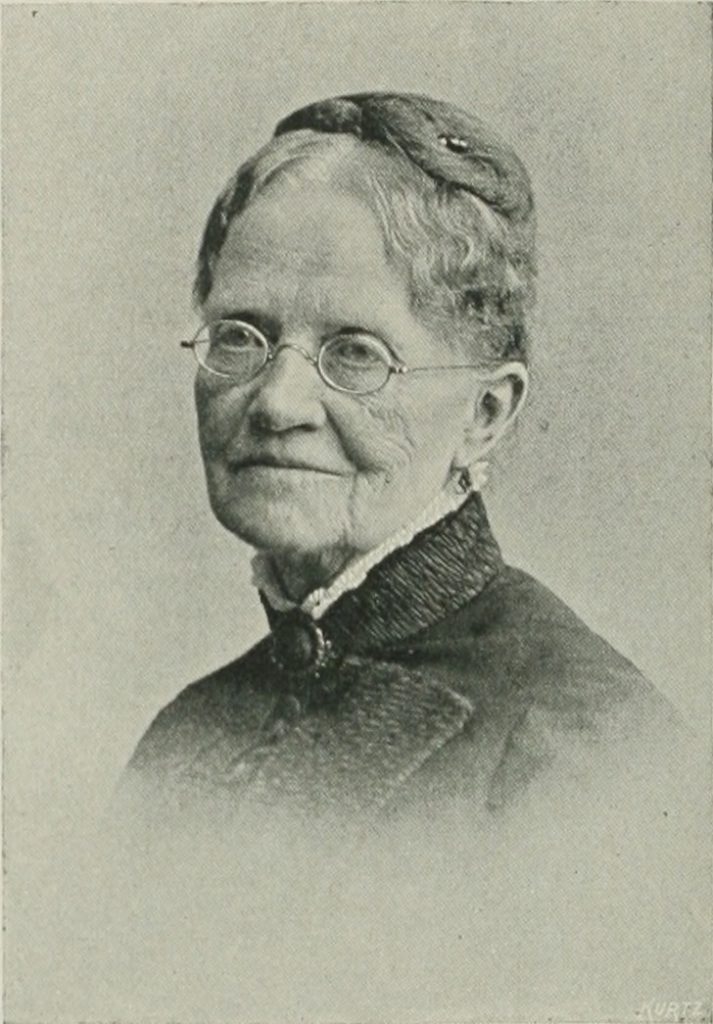
Her improvements and property, however, paled in comparison to her accomplishments that pertained to the matter of the heart, long known as a philanthropist and causes for the less fortunate. Some of these efforts included the organization of the Protestant Orphan Asylum of Milwaukee, where she served as its first treasurer. She also helped organize and served as the first president of the Milwaukee Women’s Club. Locally, she furnished the new church of the Congregational Society in Clayton with a mahogany altar in 1891.
Having moved to Florida in the early to mid-1890s, she spent most of her time there as her health deteriorated. After a six-year absence, she made another trip back to her riverfront summer home in 1899. The Daily Times wrote of her visit–
Mrs. Mitchell, by her very generous and considerate acts in the past, has endeared herself to the people of Clayton, who earnestly hope her stay here this summer will be very pleasant, and that she may return to her southern home much benefited in health.
She passed away in 1902 at the age of 83, two years before her only son, John Lendrum Mitchell, who was a US Congressman and Senator from Wisconsin.

Woodlands Becomes “Zenda” with 1915 Purchase by Actor James K. Hackett
Woodlands landed on the market around 1911, with advertisements appearing in such publications as Country Life in America. It’s unknown how long J. Herbert Johnston of New York owned it, but he ultimately sold it in 1915. The Vol. XX, No. 2 issue described the property in 1911 as–
Twenty acres of forest; large modern house, 8 master’s, 6 servants’ bedrooms, 5 baths; launch house 25 x 60; boat house, living rooms overhead; ample dock facilities; caretaker’s house; stable; ice house; chicken house; laundry; reservoir and power pump.
This property is delightfully located in a region for fishing and boating, is about two miles above the town of Clayton, N.Y., and is surrounded by many beautiful estates. Price will be made right to immediate purchaser.
That buyer would turn out to be none other than world-renowned Shakespearian actor James K. Hackett, who was no stranger to the area. Hackett was born to American parents—or were they British, as one article in the Daily Times has it? There are differing reports, but Hackett answered the rumors in the Daily Times, stating they were both American. His father, James H. Hackett, was another famous stage actor who counted Abraham Lincoln among his fans. His mother, Clara Cynthia Morgan Hackett, like her son, was born on Wolfe Island across from Cape Vincent, though both were raised in St. Lawrence County, according to the younger Hackett.
In 1914, prior to the purchase of Woodlands, Hackett became the beneficiary of more than 2/3 of his niece’s estate worth $2,000,000. It should be noted that Hackett’s father had him at the age of 70, having remarried a much younger wife a decade after his first wife died. His cousin’s father, John K. Hackett, was James’s half-brother who was born nearly 50 years before him.
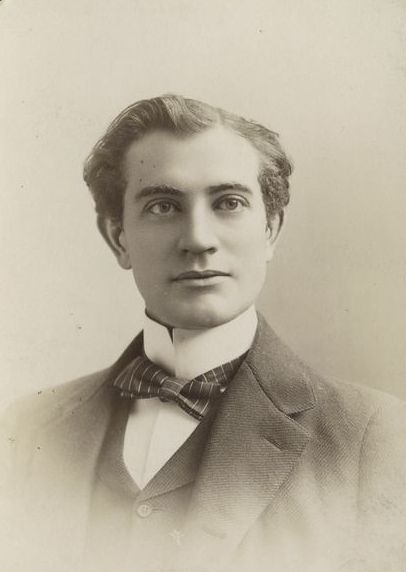
Shortly after purchasing Woodlands, Hackett renamed it Zenda but almost lost his twelve-year-old daughter to drowning before Captain Charles H. Kendall of the Thousand Islander leaped into action and saved the girl. Kendall, who was at Hackett’s employ for the summer, was handsomely rewarded with an engraved gold watch and money.
Incidentally, once Hackett learned of his potential monetary inheritance, he soon learned of another “inheritance” of sorts, one that he called a “dreadful secret” he wished not to be revealed. It surfaced in the press only four years later. As printed in the November 13, 1918, edition of the Watertown Daily Times—
My Lord James Kotoltas, Baron Hackett, of Hackettstown, better known to the American stages as James K. Hackett, was born at Wolfe Island, Ontario, 49 years ago, says the Trenton Evening Times. Mr. Hackett kept what he called the “dreadful secret” that he was a baron closely locked in his breast until about four years ago, when the story leaked out in connection with his inheritance of a large fortune. Proof of the fact that the actor might have been known as a lord if he had wished it is found in the London Court Journal of October 12, 1839, which contains the following paragraph:
“Baron Hackett has died in “New Orleans of yellow fever. He was a native of Ireland. He was an aid to the Prince of Orange, and served in the French army at Waterloo. The Barony of Hackettstown, originally an Irish peerage, is now dormant. The dignity devolves upon a cousin germane of the late baron, Mr. Hackett, American comedian.”
The American comedian referred to by the Court Journal was James Henry Hackett, father of the James K. Hackett, of latter day celebrity.
During WWI, Hackett found himself supporting the war efforts through both public speaking and organizing and providing entertainment here and abroad. He was appointed General Director to the amusements of the Knights of Columbus committee on war activities. This led him to training camps and naval stations where the Knights of Columbus were operating, taking him to France, where he assumed personal direction of the work there.
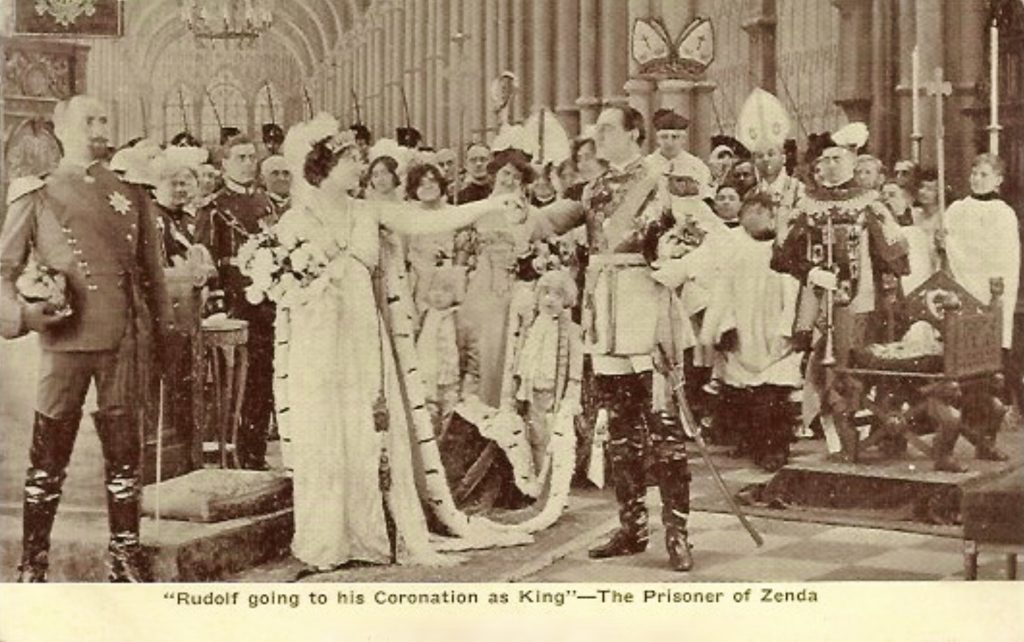
Locally, he spoke before a very large crowd at Asbury Methodist Episcopal Church’s rally to help with the interest of the Student Nurse Reserve campaign. In Clayton, he often teamed with Broadway star May Irwin, who also had a summer home in Clayton, at the St. Mary’s Annual Fair as well as the Clayton Opera House.
Hackett returned to the stage in 1920 after a three-year absence, partly due to the war efforts and a dislocated kneecap. Upon returning to New York City from overseas, the following announcement was made on August 11, 1920–
Arrangements have been completed by which I will make my London debut at the Aldwych Theatre in the late autumn for a brief season, during which I shall present several plays. I shall open with “Macbeth” and will follow it with a new play, as yet unnamed, by Douglas Murray, the English dramatist, the American rights to which I also control. It is my intention to follow that with “The Rise of Silas Lapham” and “The Adventurer,” by Alfred Capus.
Hackett’s performance in London was so well received that he was invited the following year to perform and reprise the Macbeth role at the State Theatre in Paris, France, the following year. It was the first time in history that the French government invited an American actor to perform on the French stage. The tremendous reception, the London Tatler called him “Greatest Shakespearean Actor of an Epoch, resulted in President Harding cabling his congratulations.
On Oct. 4, 1926, the Watertown Daily Times reported that Hackett had fallen ill in London, having suffered from a nervous breakdown, according to his attorney in Watertown. In written correspondence with his personal counsel, John O’Leary of Clayton, he had hoped to return to Zenda, stating, “If I can once get to Zenda, I know the balmy air of St. Lawrence will do me more good than medicine ever can.”
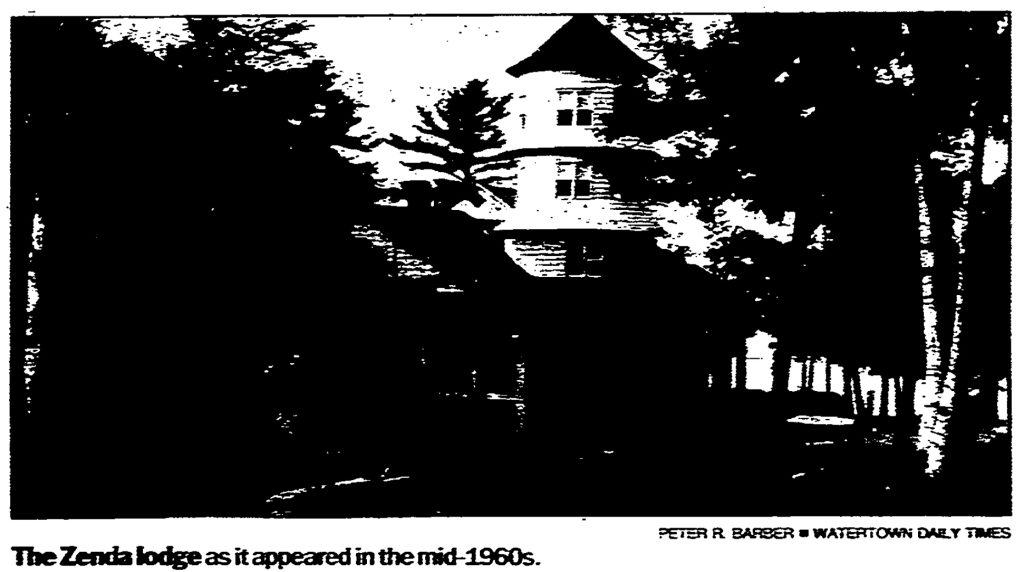
Unfortunately, the matter at hand led to his death, officially from heart disease, a little over a month later on November 8th in Paris, shortly before he was to have appeared at a royal matinee before King Goerge and Queen Mary. He was 59 years old.
His widow returned to Zenda in 1927, ultimately putting the mansion on the market, where it sold for $27,000 in 1928 to George L. Kumpf. It was described as a “more than $18,000 loss,” especially considering James had put nearly as much into refurbishing it in 1926. The 30-room summer home and 20 acres were previously valued at $100,000.
There is a lot more history to Zenda, which will need to be further researched, and this article will be updated accordingly. Sadly, the mansion was lost in a fire in 1991 while still owned by the Champion International Corporation of Deferiet. The property had been owned by the St. Regis Paper Co. since 1984 before it merged with Champion. The property had not been used since the summer of 1990 and was currently on the market.
Today, Zenda Farms is preserved by the Thousand Islands Land Trust, which seeks to “establish the Preserve as a model for land conservation through community involvement and learning within its ecologically diverse and culturally historic farm setting,” according to the Zenda Farm’s Preserve listing on TripAdvisor.
